

Engage prospects with a scan and streamline customer engagement with FREE QR code marketing tools by Sona – no strings attached!
Create a Free QR CodeFree consultation

No commitment

Engage prospects with a scan and streamline customer engagement with FREE QR code marketing tools by Sona – no strings attached!
Create a Free QR CodeFree consultation

No commitment
QR codes have transformed mobile dry cleaning services from simple convenience into powerful, measurable growth engines. Whether it’s streamlining customer acquisition, enhancing on-the-go customer experiences, or enabling seamless appointment scheduling and payments, QR codes replace time-consuming processes with instant, mobile-friendly actions that capture valuable engagement data to boost conversions. Imagine your customers effortlessly scanning a code to book services or track orders — all while you gain real-time insights into what drives repeat business.
With Sona QR, you can create dynamic, trackable QR codes in seconds, update campaigns instantly without reprinting, and directly connect every scan to revenue. This means no missed opportunities and smarter marketing that grows your customer base and loyalty. Start for free with Sona QR today and turn every scan into a satisfied customer and a closed sale.
Mobile dry cleaning services allow customers to schedule pickups and deliveries of their garments through an app or website, where the clothes are collected, cleaned, and returned without the customer needing to visit a physical store.
Using QR codes in a dry cleaning business streamlines order tracking, improves inventory management, reduces errors, and enhances customer communication by providing easy access to order status and service details.
Customers can scan the QR code attached to their garments or order receipts to instantly view the current status of their dry cleaning orders, including pickup, cleaning progress, and delivery updates.
There are several mobile apps designed for dry cleaning and laundry services that offer features like scheduling pickups and deliveries, order tracking with QR codes, payment processing, and customer notifications.
Integrating mobile technology can be done by adopting apps that support order scheduling, implementing QR code systems for tracking, and using digital payment solutions to enhance customer convenience and operational efficiency.
Best practices include placing QR codes on garment tags or receipts, ensuring codes link to real-time order information, training staff on scanning and updating statuses, and promoting the feature to customers for easy access.
They provide customers with flexible scheduling, door-to-door pickup and delivery, real-time order tracking via mobile apps and QR codes, and cashless payments, eliminating the need to visit physical stores.
Costs may include developing or subscribing to a mobile app, purchasing or generating QR code systems, staff training, and potentially investing in delivery logistics, but these can vary based on business size and technology choices.
By enhancing customer convenience and satisfaction, mobile dry cleaning services can attract more clients, increase repeat business, streamline operations to reduce costs, and open new revenue streams through digital marketing and app promotions.
Successful examples include businesses that have implemented user-friendly apps for scheduling and tracking, integrated QR code systems for efficient order management, and offer reliable pickup and delivery services that have increased customer loyalty.
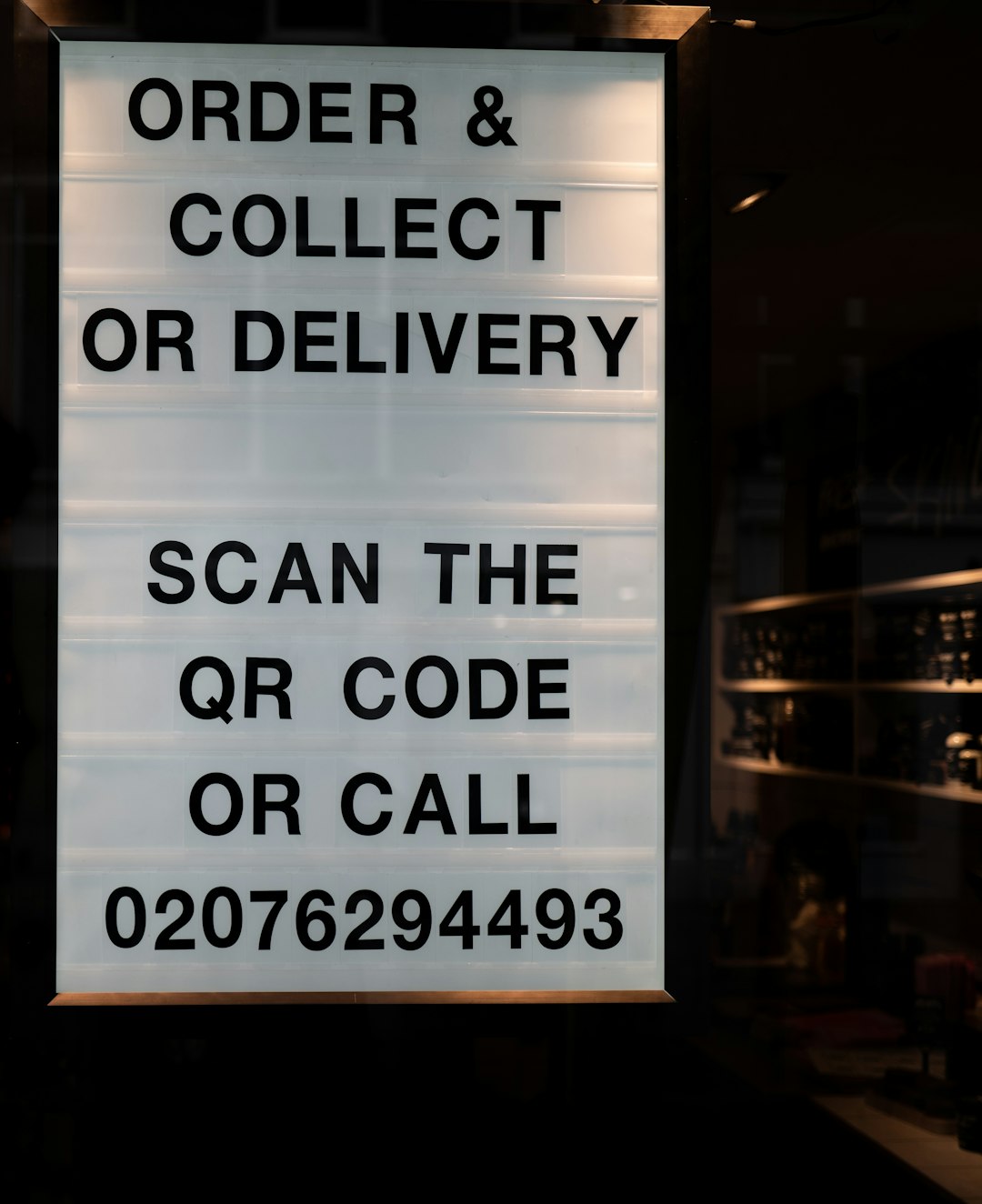
The mobile dry cleaning services industry is rapidly embracing digital transformation and mobile marketing to meet convenience-driven consumer demands. Customers expect instant scheduling, transparent order tracking, and accessible information about eco-friendly options without leaving their homes. Yet many providers still rely on paper-based scheduling, handwritten collection slips, or static print advertisements that are difficult to measure and often fail to convert interest into action.
These gaps in the offline-to-online customer journey let valuable opportunities slip away. A postcard might be read or a door hanger might be noticed, but without a digital bridge and attribution, you cannot tell who engaged or what they did next. Untracked pickups and anonymous interactions create missed revenue, operational friction, and marketing blind spots. By embedding QR codes across every physical and digital touchpoint, you can convert moments of attention into measurable digital engagement. Each delivery bag, hanger, or flyer becomes a one-tap gateway to schedule a pickup, install your app, review eco-friendly services, or join a loyalty program. The result is a connected experience that unifies data, reduces errors, and accelerates conversions.
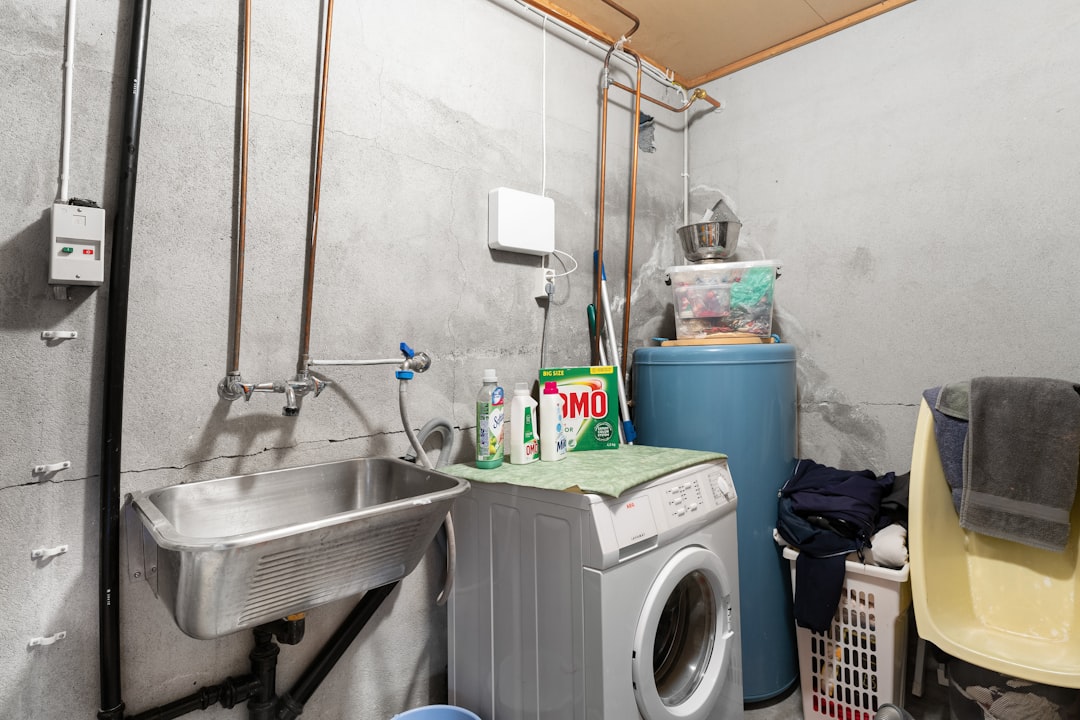
QR codes are the simplest, most reliable bridge between physical service moments and digital outcomes. In mobile dry cleaning, customers interact with your brand through bag drops, door hangers, vehicle wraps, and word of mouth. Without a direct path to action, these moments often fade. QR codes turn every interaction into a measurable, traceable event that can be followed by a booking, app install, review, or remarketing sequence. For a broader overview, see QR codes in marketing.
Start by replacing analog processes that introduce friction or data loss. Swap printed brochures with QR-enabled landing pages that display pricing and scheduling. Replace handwritten notes with QR forms that route into your order management system. Convert static coupons into dynamic QR offers that update without reprinting. Each of these changes reduces manual errors, captures more data, and accelerates your funnel.
For example, replacing handwritten pickup tags with QR-powered order labels that sync to your scheduling system reduces lost notes and misinterpretations. Each scan logs a data point tied to a customer profile, which enables targeted retention offers and reliable notifications. Modern QR platforms, such as Sona QR, integrate with CRMs and marketing systems, turning scans into actionable signals and closing the loop between offline touchpoints and online conversions.
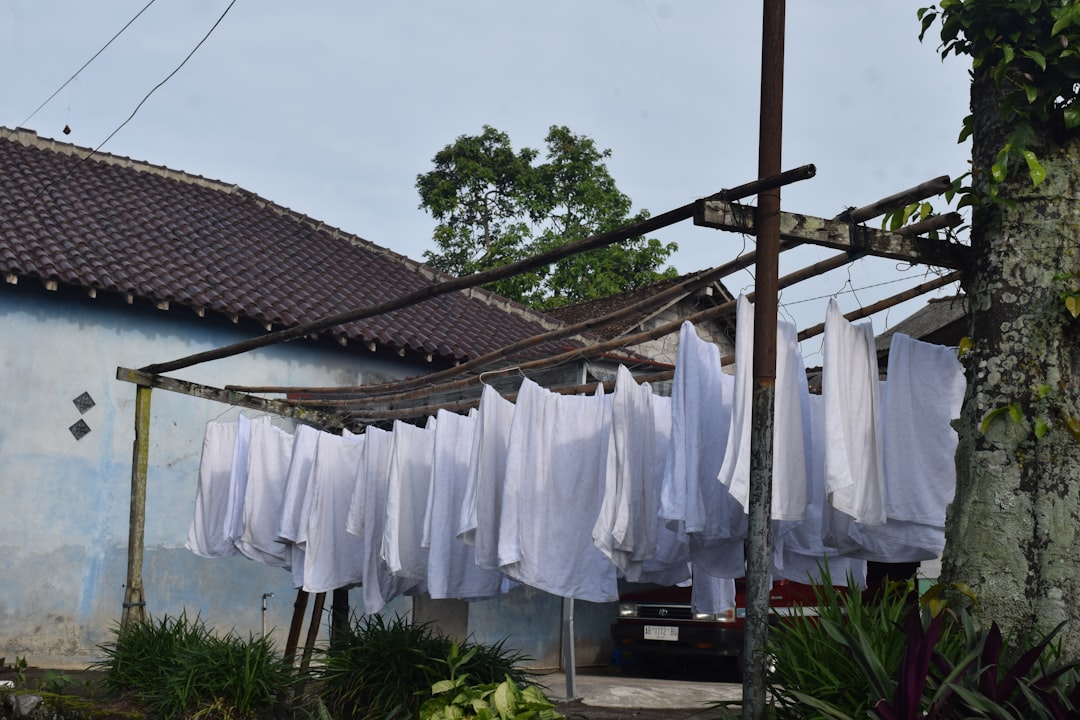
Traditional print materials like appointment cards, door hangers, van decals, and neighborhood flyers capture attention but often fail to drive immediate action. Customers must type long URLs, call during business hours, or keep track of paper coupons. Without a direct path to completion and realtime tracking, marketers cannot tie physical assets to outcomes.
QR codes address this gap by making every interaction instantly actionable. A scan can launch a booking form, show the nearest pickup window, enroll a customer in a loyalty program, or open an app store page. Dynamic QR codes allow fast updates without reprinting, so you can change offers or landing pages as inventory, pricing, or routes change. Explore fresh QR campaign ideas to test across seasons. Most importantly, QR codes provide trackability. You can see which van wrap, bag tag, or mailer drove engagement and measure performance at a granular level.
For mobile dry cleaning providers that rely on local presence and community marketing, QR codes transform static placements into ongoing digital campaigns. Door hangers become booking engines, return bag tags become loyalty entry points, and vehicle decals become neighborhood lead generators. Managers can then see which neighborhoods, routes, or seasonal campaigns perform best and reallocate resources accordingly.
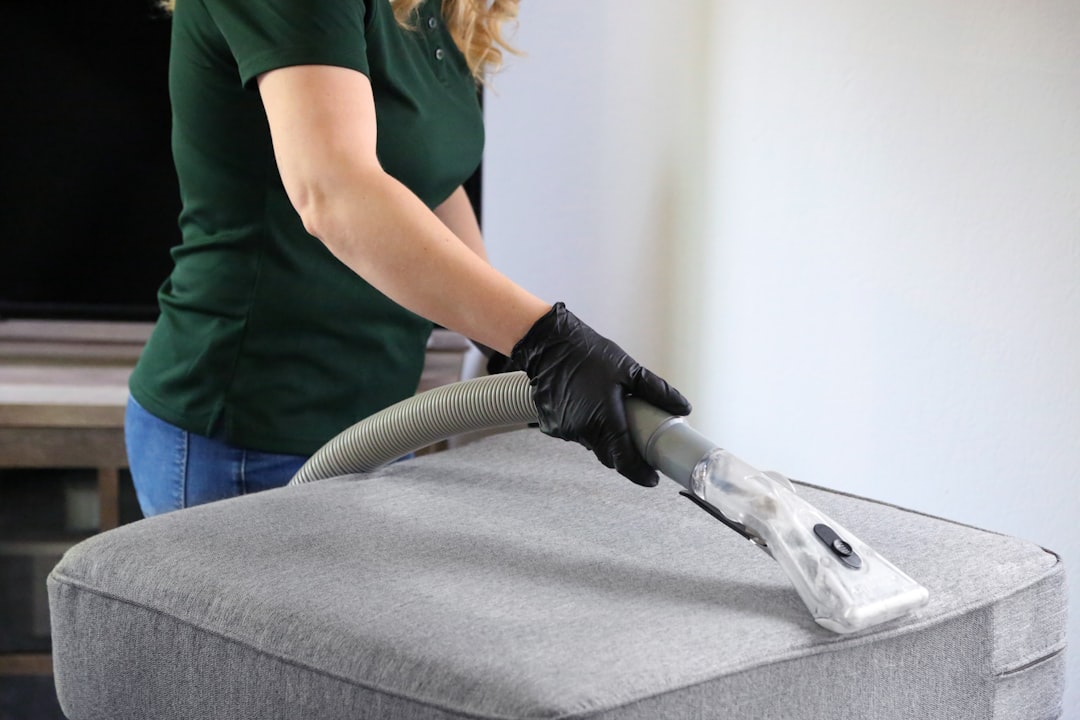
Mobile dry cleaning businesses interact with customers in many contexts, including doorstep pickups, delivery confirmations, vehicle signage, and neighborhood promotions. For industry-specific solutions, see dry cleaning industry QR. Different QR formats support these contexts in specific ways and can be combined to create a cohesive funnel.
Dynamic QR codes are best for campaigns that evolve, like rotating promotions or seasonal offers. Static codes are adequate for evergreen items such as your vCard or general contact page. With Sona QR, you can generate multiple formats, update destinations dynamically, and manage everything in one dashboard.
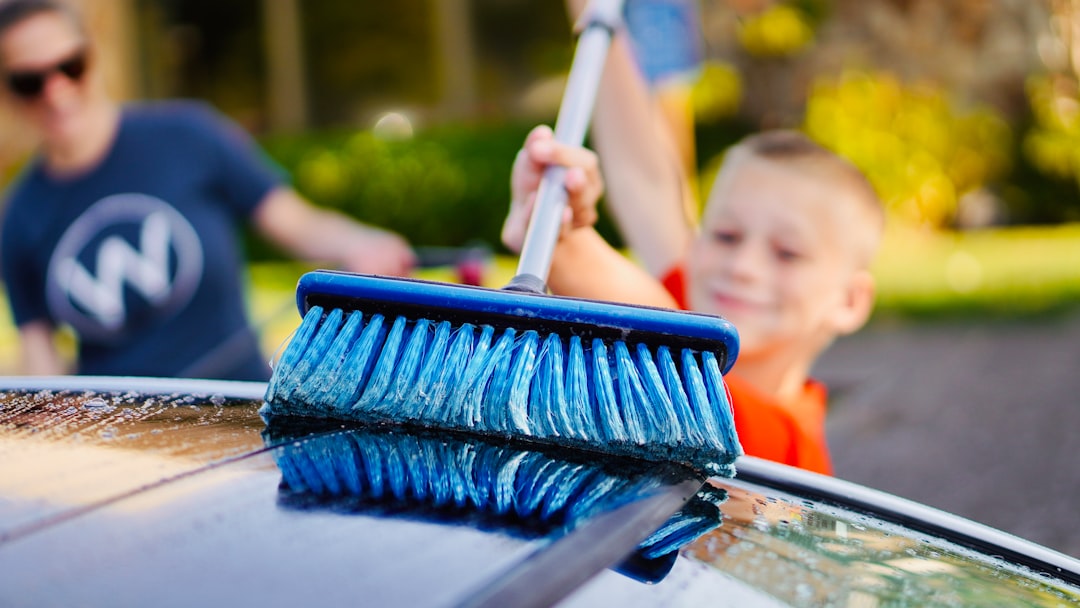
Many mobile dry cleaning providers miss out on high-intent opportunities because physical touchpoints do not connect to digital systems. By thoughtfully placing QR codes where customers already engage with your brand, you can convert anonymous attention into measurable demand.
Bringing these physical touchpoints online builds a more complete funnel. You not only generate leads more efficiently, you also collect the data needed to attribute results and optimize spend. Over time, placement insights will reveal which contexts and messages consistently deliver conversions.
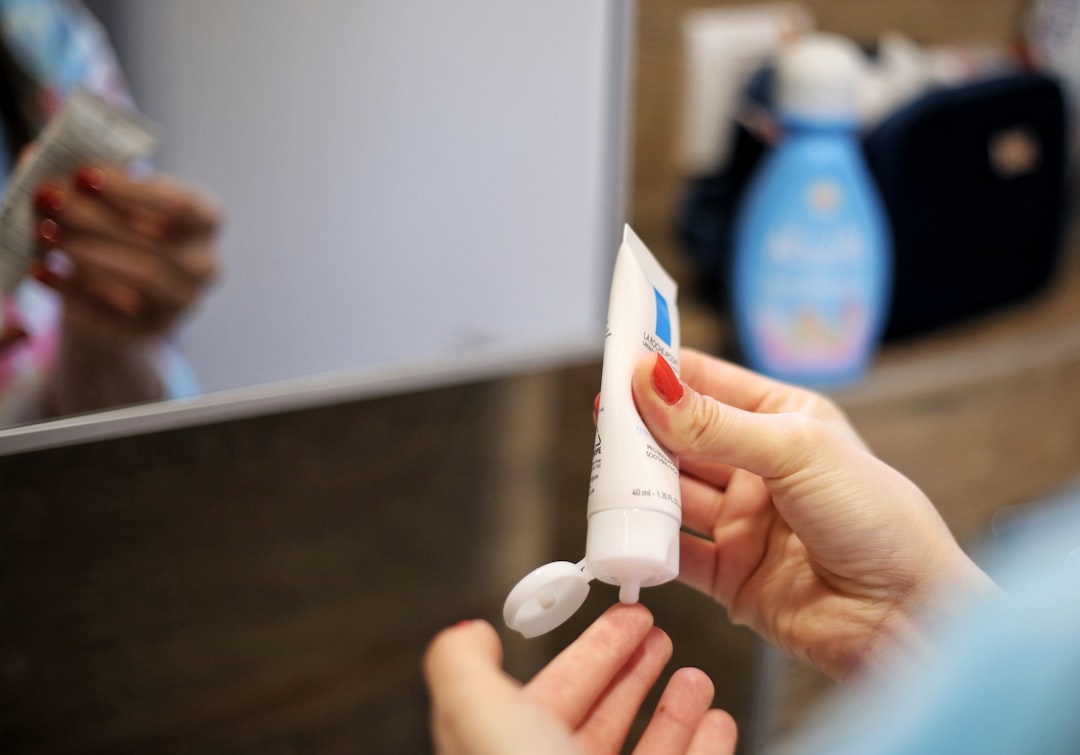
Mobile dry cleaning businesses share a common set of conversion goals. They want to increase pickups, streamline reorders, educate customers on eco-friendly practices, and collect reviews. QR codes make these goals achievable in moments that previously fell through the cracks.
By embedding these use cases at every step of the customer journey, you make it easy for customers to act and for your team to capture the resulting data. The outcome is a higher conversion rate from the same physical footprint and more predictable, trackable growth.
Every scan tells a story. It reveals interest in a specific service, context such as location or time of day, and Sona’s intent data can help you translate those signals into segments such as pricing research versus ready-to-book behavior. With the right setup, QR campaigns can automatically segment your audience and power remarketing across email, SMS, and ads.
For example, a QR code labeled First Order on new client bags can trigger a welcome journey with garment care tips, app onboarding, and a loyalty bonus after the second order. A separate QR code on corporate pickup bins can segment office managers into a dedicated account nurture sequence with volume discounts and scheduled pickup calendars. Over time, these distinctions compound, driving higher conversion rates and lower acquisition costs.
QR codes are the connective tissue that unifies print, out-of-home, in-person, and digital campaigns. Instead of running disconnected efforts, you can centralize performance metrics and align creative across channels. Each scan becomes a datapoint that clarifies what messaging and placements deserve more investment.
With a platform like Sona QR, you can manage all codes in one hub, apply campaign tags, monitor performance in real time, and sync scan data to your CRM and ad accounts. This connected approach transforms independent channels into a single system that moves people from awareness to repeat purchase.
Launching a QR program is straightforward when you align your goals, creative, and data strategy. The following checklist provides a repeatable playbook that works for both one-off promotions and ongoing growth.
Successful QR deployment is not just about printing a code. It is about pairing clear calls to action with thoughtful placement, then measuring what happens next. Plan for scannability, mobile-friendly landing pages, and consistent follow-up to turn a single scan into a booked pickup and a loyal customer.
Define the specific business outcome you want, such as increasing weekly pickup requests, improving repeat order frequency, onboarding more customers to your app, or raising referral participation. Vague goals lead to scattered efforts with unclear results.
Select the format that best supports your objective and gives you the flexibility to adapt. For ongoing campaigns, dynamic codes provide editability and analytics, which are crucial for optimization.
Strong design improves scan rates and makes your brand feel polished. Use logo marks, brand colors, and a short benefit-driven CTA.
Place codes where customers naturally have time and motivation to scan. Match placements to behavior and context rather than relying on guesswork.
Treat each QR placement as an experiment. Use the resulting data to refine creative, placement, and offers.
Modern platforms like Sona QR can automate many of these steps, from generating dynamic codes and capturing analytics to syncing scan events with CRM records and ad audiences. Automation reduces manual work and speeds up optimization cycles.
Attribution is a persistent challenge when much of your marketing happens in the physical world. That is where offline attribution becomes critical. QR codes solve this by tagging offline moments with digital identifiers that can be tracked through to orders, reviews, and referrals.
With Sona QR and Sona.com, you can go beyond simple scan counts. Sona QR records behavioral context and syncs to your CRM, while Sona.com connects anonymous scans to known buyers using identity resolution and multi-touch attribution. You can see how each scan contributes to pipeline and closed revenue, and how it interacts with other touches such as website visits, emails, and ads. This end-to-end view turns QR engagement into a core part of your performance marketing strategy.
QR programs work best when they are measurable, automated, and supported by your team. Focus on practical steps that improve scan rates and conversion quality, then scale what works.
As an example, include a message on delivery bags reading Scan for your pickup ETA and loyalty bonus. Customers get immediate value, while your team captures intent signals that can power future offers and retention campaigns. You can generate and track your first QR codes in minutes with Sona QR. Start creating QR codes for free.
Mobile dry cleaning thrives on convenience, reliability, and trust. QR codes enhance all three by turning every bag, receipt, or flyer into a digital gateway. They reduce missed opportunities, automate next steps, and bring measurement to touchpoints that previously felt invisible. When you can see which placements and messages convert, you can improve customer experience and allocate resources confidently.
Adopt a platform approach for best results. Use dynamic codes, centralized management, and CRM integrations so every scan feeds your funnel and your reporting. Whether your goals are higher booking rates, more app installs, or better retention, QR codes provide the connective tissue that links offline moments to measurable business outcomes.
Creativity matters as much as placement. Consider QR codes on temporary lobby stands during inclement weather with Scan for next-day pickup guarantees, or scannable thank-you cards that lead to Refer a neighbor and both of you save. Pairing contextually relevant offers with clear CTAs builds habits that turn casual users into loyal customers.
The most successful QR programs combine disciplined testing with thoughtful design and team enablement. Many failures trace back to poor placement, unclear value, or lack of follow-up.
For execution, use Sona’s retargeting playbook. The combination of physical convenience, digital attribution, and timely follow-up gives mobile dry cleaners a durable competitive edge.
QR codes have transformed mobile dry cleaning services from simple drop-off points into dynamic, measurable growth engines. Whether it’s attracting new customers, streamlining service requests, or enhancing convenience through instant access to promotions and scheduling, QR codes replace traditional friction with seamless, mobile-friendly interactions that capture valuable engagement data to boost conversions.
Imagine customers effortlessly scanning a code to schedule pickups or unlock exclusive offers, while you track which campaigns drive the most bookings in real time. With Sona QR, you can create dynamic, trackable QR codes in seconds, update campaigns instantly without reprinting, and directly link every scan to revenue growth. No missed opportunities—just smarter, more profitable customer connections.
Start for free with Sona QR today and turn every scan into a loyal customer, a booked service, or a lasting relationship.
Mobile dry cleaning services use QR codes on items like delivery bags and door hangers to let customers instantly schedule pickups, track orders, join loyalty programs, and access service information through a simple scan.
QR codes create a direct, trackable link between physical touchpoints and digital actions, increasing customer convenience, reducing manual errors, enabling real-time tracking, improving marketing attribution, and boosting conversion rates.
By scanning QR codes on delivery bags or garment tags, customers can access order tracking information that syncs with the scheduling system, while businesses capture scan data for analytics and customer profiles.
Mobile dry cleaning providers often use dedicated apps that customers can download via QR codes which direct them to the correct app store, facilitating easy reordering, push notifications, and loyalty programs.
Integrate mobile technology by replacing analog processes with QR-enabled forms and landing pages, syncing scan data with CRM and marketing platforms, and using dynamic QR codes to update promotions without reprinting.
Best practices include designing scannable codes with clear CTAs, placing codes where customers naturally engage, using dynamic codes for flexibility, tracking scan-to-action conversions, and training staff to promote QR usage.
They provide contactless scheduling, instant order tracking, easy access to eco-friendly information, app downloads, and streamlined review and referral processes all accessible via quick QR code scans.
Creating and deploying QR codes is inexpensive compared to traditional print marketing, and they often deliver higher ROI by enabling digital attribution, reducing manual errors, and accelerating conversions.
By converting physical interactions into measurable digital engagements, increasing booking rates, improving customer retention through loyalty programs, and enabling targeted marketing that drives repeat orders.
Examples include a regional cleaner increasing repeat orders by 36 percent through loyalty QR codes on bags, an eco-focused provider gaining 44 percent positive feedback via sustainability info codes, and event-driven app installs boosting orders.

The shift toward convenience, sustainability, and digital-first experiences has transformed how customers engage with mobile dry cleaning services. Whether managing busy schedules or seeking contactless solutions, today’s users demand simplicity and speed in every interaction. Yet many operators struggle to capture the full scope of high-value prospects, as some visit the website or interact with offline touchpoints without ever being properly tracked or entered into the CRM, quietly draining growth opportunities.
Physical items such as service tags, invoices, branded packaging, locker panels, and local advertisements can drive tremendous engagement when paired with the right technology. QR codes, now a strategic tool for mobile dry cleaning companies, help combat visibility gaps by enabling seamless transitions from offline materials to digital order tracking, app downloads, loyalty program participation, or immediate bookings. This removes friction, ensuring even those who never fill out a form are added to your pipeline and nurtured.
By rethinking legacy workflows and embracing QR technology, mobile dry cleaning businesses can reduce missed segmentation or targeting opportunities, boost conversion rates, and collect actionable data across every customer interaction. This guide outlines frameworks and campaign strategies for leveraging the full potential of QR codes, addressing both persistent challenges and the most promising paths to efficient, measurable growth.
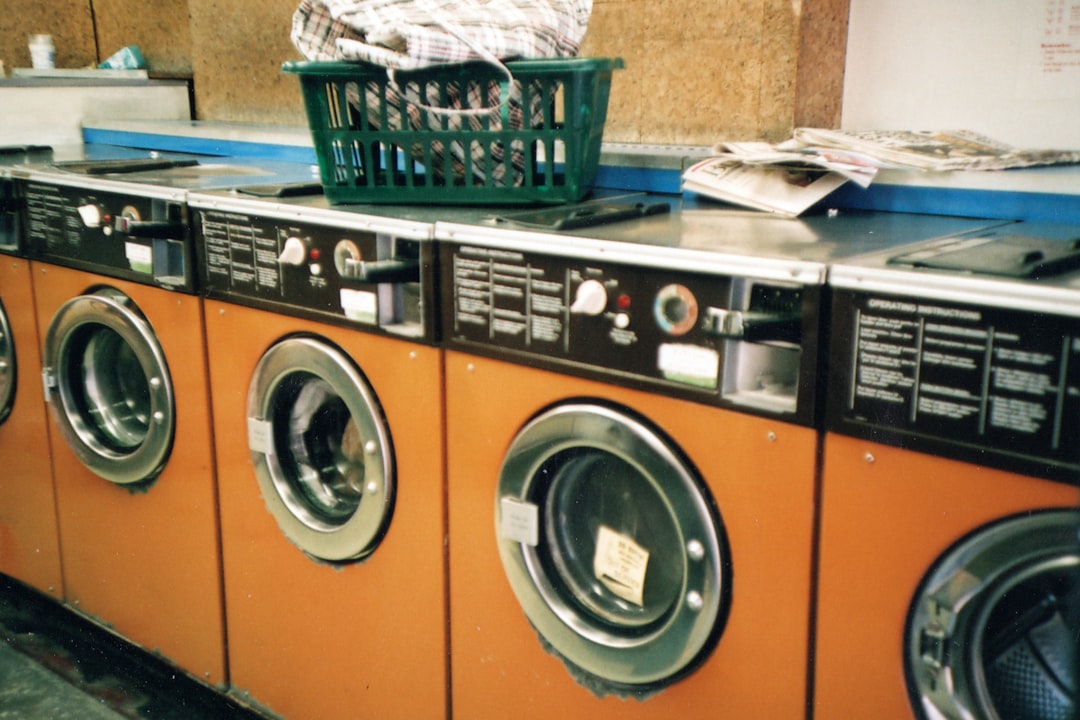
QR codes bridge the gap between physical touchpoints and digital outcomes, making it easier to drive conversions, streamline operations, and delight customers. When thoughtfully deployed, they replace outdated analog processes with low-friction digital experiences, allowing your team to spend less time chasing information and more time serving customers.
Here is how to implement them strategically across your business:
Platform solutions such as Sona QR’s product overview can support deployment at scale. With dynamic links, editable destinations, and CRM integrations, every code remains trackable and adaptable. This addresses fragmented data, improves attribution, and ensures each scan becomes an actionable signal in your growth engine. Start creating QR codes for free.

Mobile dry cleaning is rich with offline touchpoints, from delivery bags to route signage. Without a bridge to digital experiences, high-intent interactions often go unmeasured. QR codes solve the most pressing challenges in this environment by turning every physical surface into a measurable doorway to action.
Launching QR codes across appointment cards, delivery bags, in-building signage, promo postcards, and laundry sacks creates quantifiable results. Instead of hoping someone visits your homepage later, you offer a single, scannable next step that reliably converts interest into pipeline growth.
Mobile dry cleaning services use a range of QR formats to meet different goals, from acquisition to retention. The most valuable formats in this vertical prioritize booking, tracking, customer support, and loyalty.
Dynamic QR codes are ideal for most campaigns since they are editable, trackable, and support A/B testing by placement. Static codes can work for permanent destinations such as evergreen stain guides or company contacts, but they limit optimization. As a rule of thumb, use dynamic for anything tied to performance goals, personalized experiences, or campaigns that may evolve.
The best QR deployments live where your customers already engage with your brand offline. Think through the day in the life of your customers, couriers, and routes to identify the highest-impact surfaces and moments.
Prioritize placements that bridge the physical-to-digital gap at the exact moment a customer has a need. Ensure scannability with adequate size, contrast, and lighting. For surfaces like vans or outdoor signs, use larger codes and short, high-contrast CTAs to improve scan success from a distance.
Practical, outcome-focused use cases ensure QR codes do more than generate clicks. They guide customers through high-value actions while creating a measurable record of engagement. See Sona QR’s use case library for more examples.
These use cases create a chain of trackable interactions. Each scan signals intent, which can trigger nurturing workflows, retargeting, or service improvements. As your dataset grows, you can tailor experiences based on customer history and route-level patterns.
Every scan is a signal you can use to shape personalized journeys. By deploying multiple codes across the customer lifecycle, you automatically create segmented audiences based on intent and context, then use those insights to drive precise follow-up.
In mobile dry cleaning, useful distinctions include frequent commuters vs. remote workers, building residents vs. single-family homes, and new customers vs. loyalty members. By aligning QR codes to these segments, you can adapt messages to lifestyle and location, improving both engagement and conversion.
QR campaign ideas can inspire ways to unify offline and digital marketing for mobile dry cleaners. By embedding them across channels, you replace guesswork with measurable engagement and create real-time pathways to act.
Centralized management with Sona QR keeps these campaigns organized. Use it to monitor performance, compare placements, and sync scan events with your CRM in real time, so every channel contributes to a connected, attributed funnel.
A well-planned QR initiative turns surfaces you already own into booking machines. Use the following checklist to move from idea to measurable impact with confidence and speed.
Start by defining a single business outcome. Do you want to increase new bookings in a specific neighborhood, reactivate dormant customers, or grow app adoption among active routes? Write the goal and success criteria before any design work begins.
Align the use case to a specific experience. For instance, a door-to-door mailer could focus on Scan to schedule your first pickup and save 20 percent, while a locker poster might prioritize Scan to track your order and earn 50 bonus points. Clear intent reduces confusion and anchors measurement.
Choose between static and dynamic QR codes based on flexibility needs. Static codes work for long-term, unchanging destinations like a stain guide PDF. For campaigns where you want to edit destinations, test offers, or capture analytics, dynamic QR codes are best.
Dynamic codes support deep linking, A/B testing, and audience tagging without reprinting. With Sona QR, you can update a seasonal offer on all locker posters instantly or redirect a code during a storm to promote express service, maintaining relevance and performance.
Design for clarity and scannability. Use high-contrast colors and ample white space around the code. Add your logo and a strong, benefit-led CTA such as Scan to book a pickup in 30 seconds or Scan for real-time tracking. Include a short URL as a backup for customers who prefer to type.
Test in real-world conditions. Validate on multiple devices, in low light near lockers, and at typical distances on vans or lobby signs. Check error correction by printing at final size. Invite frontline staff to try the experience and share feedback on clarity and usefulness before full deployment.
Roll out across high-traffic touchpoints where the action you want feels natural. For acquisition, prioritize door hangers, postcards, van signage parked at service stops, and partner placements in residential buildings. For retention, focus on delivery bags, receipts, locker slips, and in-app messages.
Tag every code by channel, placement, and audience so you can see what drives performance. A simple naming convention in Sona QR such as LA-West-HolmbyDoorHanger-NewCustomer-OfferA makes it easy to compare routes, partners, and creatives. Start with a few high-confidence placements, then expand based on early results.
Instrument the journey from scan to revenue. Track scan volume, unique scanners, conversion rate to booking or app install, and repeat engagement. Set baselines for each placement, then test alternate CTAs, designs, or destinations to improve results.
Close the loop in your CRM. Use Sona QR to sync scan events with contacts and accounts, trigger follow-ups based on intent, and attribute bookings to specific QR placements. Build a monthly review to prune underperforming assets and replicate winners across neighborhoods and partner properties.
Successful QR programs do more than drive engagement. They connect offline interactions to bookings, upsells, and lifetime value. By tracking each scan with time, device, location, and destination data, you build an attribution layer that reveals the performance of physical media and frontline operations.
Advanced platforms enrich CRM records with scan context. When you combine QR data with website visits, app events, and promo redemptions, you can trace a clear path from a door hanger scan to a first booking, a loyalty enrollment, and a reactivation three months later. This level of visibility guides smarter spend decisions and sharper customer journeys. For deeper context, read Sona’s blog post titled The Essential Guide to Offline Attribution: Maximizing ROI Through Offline Channels.
With Sona QR and Sona.com, you can capture every scan, measure engagement by channel and context, respond to performance in real time, and sync activity to your CRM. Identity resolution and multi-touch attribution link scans to known buyers, so you see how QR engagement contributes to pipeline and closed revenue rather than only top-of-funnel interest. Learn how first-party intent improves follow-up in Sona’s blog post titled The Essential Guide to Intent Data: Leveraging Signals to Increase Revenue.
The best QR strategies pair strong placements with crystal-clear value. Build on early wins with disciplined testing and frontline alignment, and your QR program will become a durable source of bookings and loyalty.
Mobile dry cleaning services face growing pressure to deliver faster, smarter, and more sustainable customer experiences. Persistent pain points like untracked prospects, incomplete segmentation, and fragmented data hinder scalable growth. Strategic QR code implementation allows teams to replace inefficient processes, build high-value audiences, and connect every offline interaction with a measurable digital outcome.
Whether optimizing eco-friendly operations or enhancing app-based offerings, QR codes create an essential bridge to efficiency and reliable revenue growth. The time to adopt and refine QR marketing is now. With a platform like Sona QR, you can generate and track your first codes in minutes, centralize performance analytics, and attribute bookings to the exact surfaces and messages that drove them, ensuring measurable, sustainable results at every stage of your dry cleaning business.
QR codes have revolutionized mobile dry cleaning services by transforming customer interactions into seamless, measurable growth opportunities. From simplifying appointment bookings to enhancing personalized promotions, QR codes enable mobile dry cleaners to acquire new customers, streamline service experiences, and gather actionable data that drives repeat business and higher conversions. Imagine instantly connecting customers to your services with a simple scan—no calls, no hassle, just effortless engagement.
With Sona QR, you can create dynamic, trackable QR codes in seconds that update instantly without reprinting, letting you optimize campaigns on the fly and link every scan directly to revenue. This means you’ll know which marketing efforts bring in the most clients and how to tailor your services for maximum impact. Start for free with Sona QR today and turn every scan into a loyal customer and every campaign into measurable growth.
Mobile dry cleaning services use QR codes on items like garment bags, receipts, and door hangers to enable easy booking, order tracking, loyalty program participation, and customer support, creating seamless digital experiences from offline touchpoints.
QR codes improve visibility by linking offline interactions to digital actions, increase conversion rates, collect actionable data, reduce friction for customers, enable dynamic content updates, and allow precise tracking of marketing effectiveness.
By scanning dynamic QR codes placed on garment bags, locker slips, or receipts, customers can view real-time order status with estimated delivery times and additional options, while businesses collect data on scan times, locations, and user behavior.
Many mobile dry cleaning services offer apps that customers can download via QR codes; these apps facilitate scheduling, order tracking, loyalty rewards, and push notifications for reminders and offers.
Integrate mobile technology by replacing analog workflows with QR code-powered digital forms, booking systems, and tracking; use platforms like Sona QR for scalable code generation, dynamic content, CRM integration, and real-time analytics.
Best practices include using dynamic QR codes for flexibility, placing codes where customers naturally pause, designing codes with clear calls to action and high contrast, tagging codes for tracking, testing in real-world conditions, and automating follow-ups.
They provide contactless, instant access to booking, order updates, special offers, and customer support through easy-to-scan QR codes that eliminate the need for phone calls or app installs, speeding up interactions and reducing friction.
Costs are generally low since QR codes are inexpensive to produce and scale; investments mainly involve platform subscriptions for dynamic code management, integration with CRM systems, and possible design and printing expenses.
By using QR codes to capture offline prospects, drive repeat bookings, enroll customers in loyalty programs, enable targeted promotions, and track marketing ROI, mobile dry cleaning services convert more interactions into measurable revenue growth.
Successful examples include QR codes on door hangers for scheduling pickups, garment bags for order tracking, receipts for loyalty enrollment and discounts, locker panels for quick sign-ups, and partner venue placements for wider customer acquisition.

Mobile dry cleaning services are undergoing a significant transformation as customers increasingly expect frictionless, on-demand laundry solutions that fit into their busy, digitally connected lives. Traditional dry cleaning models, reliant on paper tickets, phone-based scheduling, and manual order tracking, are quickly being replaced by mobile laundry apps, contactless pickup, and smarter mobile marketing strategies. Yet a persistent challenge remains: many operators miss out on high-value prospects or struggle to track anonymous intent. See Sona’s account identification for more information, as opportunities can be lost before they even begin.
Today's customer journey spans both physical and digital touchpoints, challenging laundry operators and marketers to find new ways to drive engagement and streamline service delivery, even when customers do not fill out forms or make themselves immediately known. QR codes represent a breakthrough opportunity for mobile dry cleaning services to link real-world customer moments, like garment drop-offs, event promotions, or direct mail offers, with dynamic, trackable online actions. Without a mechanism to surface engagement from these physical interactions, potential leads remain invisible and critical feedback or upsell opportunities go untapped.
Whether it is enabling mobile order tracking, automating booking with a scan, or transforming printed flyers into measurable lead generators, QR codes eliminate analog inefficiencies and unlock richer data at every stage of the laundry service funnel. This article examines how QR codes power revenue growth, accelerate conversions, and radically improve customer experiences for mobile dry cleaning providers while providing practical frameworks to overcome visibility gaps and operational bottlenecks.

Outdated processes such as paper claim tickets, manual promotion redemption, or untracked phone inquiries often result in missed opportunities and incomplete customer records. Mobile dry cleaning providers frequently struggle to convert walk-in interest or printed mailer recipients into actionable digital leads, mainly because anonymous or non-form-based engagements go untracked. Replacing analog touchpoints with QR-enabled flows gives prospects a clear reason to act now, while giving your team the data required to follow up and convert.
QR codes bridge the gap between real-world intent and digital outcomes. They make it easier for customers to do what they already want to do: book pickups, track orders, redeem offers, and share feedback without downloading an app or waiting on hold. When deployed thoughtfully, QR programs reduce cost to serve, increase conversion rates, and create a steady pipeline of first-party data that strengthens your entire marketing engine.
Here’s your framework:
By modernizing these critical workflow touchpoints, laundry teams reduce lost opportunities, unlock actionable engagement data, and close the gap on silent churn or abandoned interest. The shift is not only about convenience for customers. It is about systematizing demand capture wherever attention surfaces, then turning that attention into measurable outcomes.
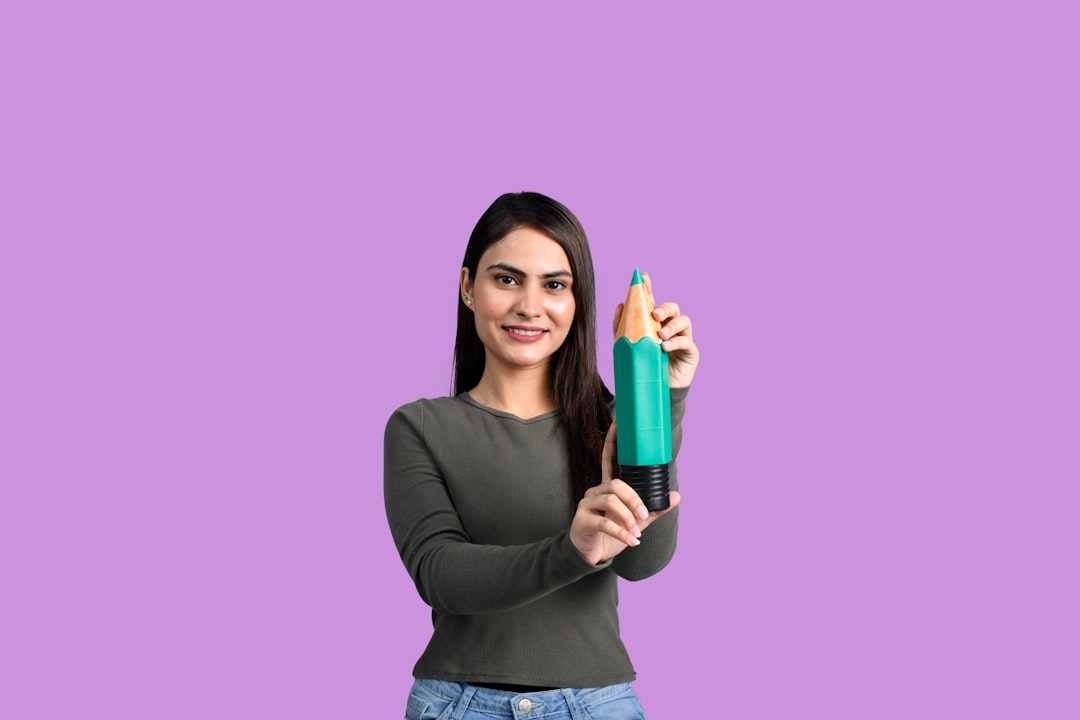
For mobile dry cleaning services, bridging offline-to-online gaps is critical. Flyers, bag inserts, locker placards, and vehicle graphics might spark curiosity, yet they rarely produce identifiable leads unless there is a frictionless digital doorway in the moment. QR codes transform those analog exposures into real-time engagement. A single scan can launch order tracking, schedule a pickup, or unlock a personalized discount, all while recording who engaged, where, and when. Explore practical QR campaign ideas for inspiration.
Customers also expect speed and simplicity. No one wants to install an app just to check a pickup ETA or to read stain-care guidance. A QR code reduces friction to a single action. When operators use dynamic QR codes powered by a platform like Sona QR, they can change the landing experience after printing. That flexibility lets you keep campaigns fresh, tailor promotions by neighborhood, and iterate messaging based on performance without reprinting a single asset.
QR codes also bring trackability and cost efficiency to physical marketing. With a dashboard view of scan volume by location, time of day, and device, you can learn which door hangers, neighborhood drops, or locker placements drive the highest scan-to-book rate. That data enables better budgeting decisions and sharper audience targeting, not to mention cleaner CRM data that improves retention and lifetime value.
Mobile dry cleaning businesses need QR formats that enable fast actions and reliable data capture. The most effective formats map to common customer jobs: track my order, schedule my pickup, share feedback, and access support. Choosing the right format for each scenario improves both customer experience and your ability to measure outcomes.
Dynamic QR codes add a critical layer of flexibility. You can keep the same printed code on a garment bag but rotate the destination from order tracking to a referral incentive after delivery, or switch a coupon landing page as seasonal offers change. For fixed information like a permanent contact card, static QR codes are sufficient and cost effective.
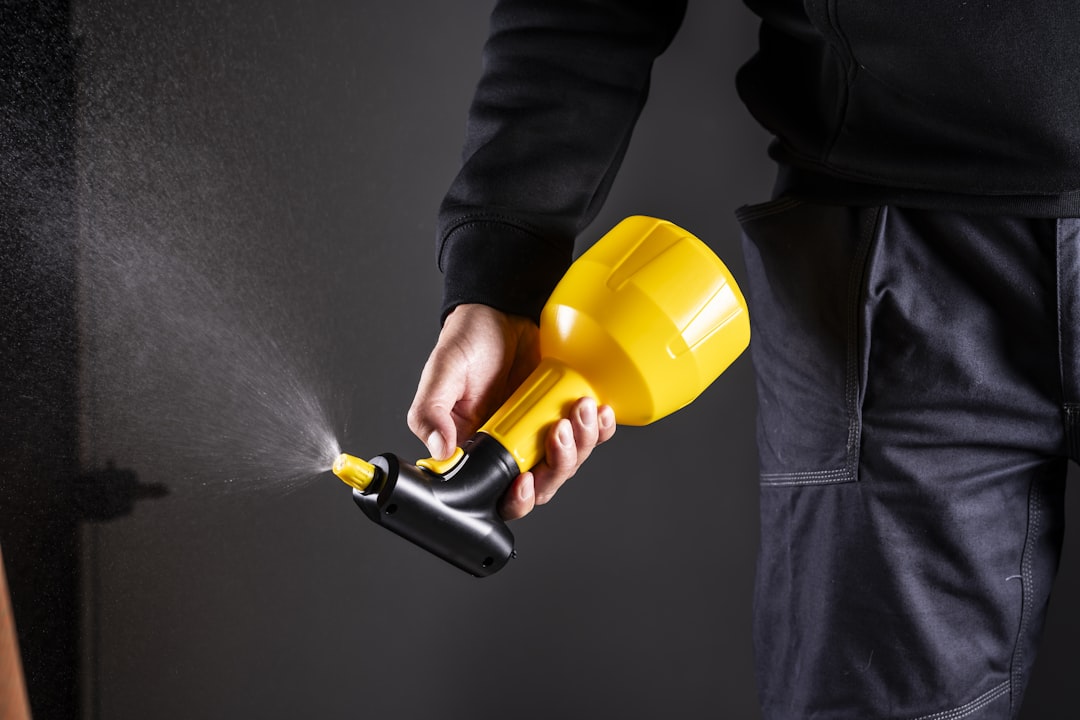
Legacy marketing in dry cleaning often relies on broad-reach mailers, generic signage, or phone calls that are difficult to measure. QR codes turn these familiar surfaces into conversion engines that capture first-party data and activate personalized follow-up. The key is to place QR codes where customers already pay attention and to make the immediate benefit obvious.
This data-driven approach prevents wasted spend on channels that look busy but do not convert. It reveals which neighborhoods are ready for expansion, which partnerships drive actual revenue, and which messages resonate at each step of the journey.
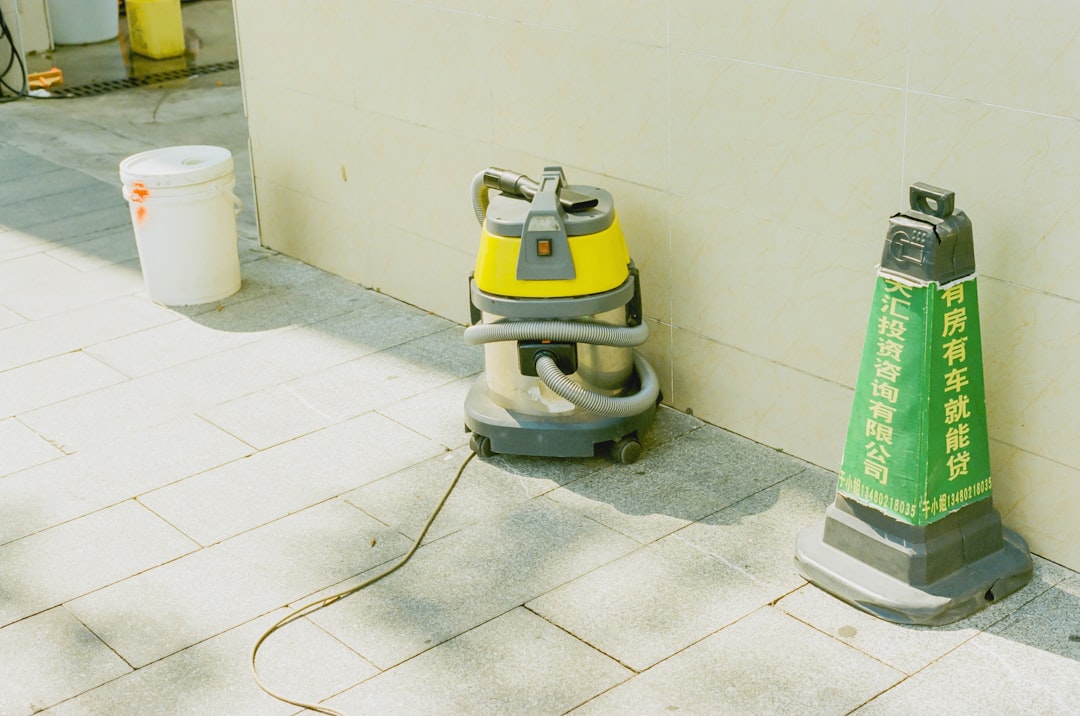
Customer acquisition and retention in mobile dry cleaning are often undermined by leakage between physical and digital moments. QR-driven workflows close those gaps by aligning intent with immediate action and measurable outcomes.
Embedded into daily operations, these use cases compress time to value for the customer and create a richer profile of engagement. The result is fewer abandonments, stronger retention, and higher lifetime value, with less manual effort from your team.
Each QR scan is a powerful intent signal. It contains where it happened, when it happened, and what the person wanted in that moment. With a structured approach, you can turn scans into segmented audiences that receive the right message at the right time, whether by email, SMS, or paid ads.
Start by aligning QR placements with journey stages. Awareness scans often come from vans, community events, or door hangers. Consideration scans come from service menus, locker signage, or price lists. Conversion scans happen on order tracking or checkout pages where upsells make sense. Tagging each code with journey metadata ensures that every scan updates the right segment in your CRM.
The goal is to act on real behavior instead of assumptions. By segmenting on scan context, you can send far more relevant messages, improve conversion rates, and reduce wasted ad spend.
QR codes are the connective tissue between your offline presence and your digital systems. They make print trackable, signage actionable, and service moments measurable. By placing them across your marketing ecosystem, you unify your data and accelerate decision making.
Start by auditing every physical and digital asset that meets a customer in the wild. For each, decide what single action you want a person to take and which data points would be most useful to capture. Then use dynamic QR codes to steer traffic to tailored, mobile-first destinations with UTMs that attribute performance back to channel and placement.
Centralizing QR management through a platform like Sona QR lets you manage destinations, monitor performance, and sync scan data to CRM and ad platforms. This creates a reliable way to prove ROI on offline efforts that previously could not be measured with confidence.
Begin with a single, high-impact problem and design a QR use case that solves it. For mobile dry cleaning, a common starting point is reducing inbound status calls with an Order tracking QR on garment bags and receipts. Another strong option is driving first-time bookings from door hangers or van decals with a New neighbor discount QR.
Select the QR type that supports your intended action and your need for data. For most growth initiatives, dynamic QR codes are the right choice because they are trackable and editable after printing. Static QR codes are useful for evergreen assets like contact cards that rarely change.
Start creating QR codes for free.
Good design increases scan rates. Use a clear CTA, adequate size, and high color contrast. Ensure the surrounding environment supports scanning, such as accessible height on lockers and glare-free placement on vans.
Place codes where attention is high and follow-through is most likely. For mobile dry cleaning, top-performing channels typically include garment bags, van wraps, door hangers, and smart locker signage.
Measurement turns scans into strategy. Connect your QR platform to your CRM and analytics tools so you can see which assets drive engagement and how that engagement converts into revenue.
Many laundry operators face frustration tracing which marketing actions drive actual bookings, reviews, or referrals, especially when customers interact via physical channels. A robust QR solution enables scan-by-scan attribution and syncs with CRM or marketing automation tools to update contact records, surface sales signals, and flag upsell or cross-sell opportunities. Instead of treating scans as vanity metrics, you can connect them to pipeline movement and revenue. Learn more about offline attribution.
Advanced tracking links offline actions, like a scan on a feedback form, to tangible outcomes such as positive reviews, repeat orders, or loyalty enrollments. With multi-touch attribution, you can understand the role each scan played alongside other steps like website visits or email clicks. Platforms like Sona QR and Sona.com make this practical by unifying fragmented touchpoints and offering identity resolution to bridge anonymous scans to known contacts.
The result is a closed loop from physical engagement to digital outcome. Your team can stop guessing and start investing where the data proves returns.
Scaling QR success means operationalizing best practices while staying creative about where and how you deploy. It also means training staff and educating customers so that scanning becomes a natural behavior every time they interact with your brand.
Focus on the combination of unique codes, precise attribution, and automation. That trio ensures you learn fast, invest smartly, and never lose a high-intent lead due to delays or manual gaps.
Creative deployment can also uncover untapped demand. Add QR codes to reusable eco bags with Scan to learn how we reduce water waste or to corporate invoices with Scan to set recurring pickups for your office. These placements tie education and convenience to real business outcomes.

A New York-based mobile laundry provider reduced ticket confusion by replacing paper stubs with QR-coded bag tags that pointed to live order tracking. The change reduced inbound status calls and order resolution time, producing a 25 percent decline in confusion-related support tickets and a 15 percent improvement in average service timelines. The operator also introduced post-delivery surveys via QR, which improved review volume and uncovered process bottlenecks they solved within weeks.
Another brand launched neighborhood expansion using large, high-contrast QR decals on vans paired with Scan to book your block pickup. The result was a 30 percent surge in local bookings within six weeks. Scan analytics revealed which routes produced the highest conversion rates, guiding route planning and flyer distribution. A third provider embedded QR codes in smart locker hubs at residential complexes that opened a building-specific booking page. They secured on-site visibility, built property manager relationships, and generated recurring, building-level demand with minimal additional marketing spend.
Consider these creative ideas to spark your own deployments:
These examples show how QR codes translate fleeting interest into measurable action while creating a steady flow of operational insights.
Success with QR codes is as much about strategy and measurement as it is about design and placement. Avoid treating QR codes as mere shortcuts. Treat them as programmable gateways that orchestrate journeys and collect the data that fuels your marketing and operations.
Train your team to make scanning a normal part of the mobile dry cleaning experience. Explain the benefits to customers up front, then make the reward clear with every CTA. Combine that with disciplined testing and centralized management, and your QR initiatives will become compounding assets rather than one-off experiments.
QR codes empower mobile dry cleaning services to transform every previously unmeasured, manual, or anonymous interaction into a high-value digital touchpoint. By surfacing intent signals, enriching account data, and automating engagement from tracking to feedback to upselling, QR deployments resolve critical pain points that suppress revenue and customer satisfaction. The operators who win will be those who turn the physical world into a data-rich front door for their digital funnel, then use platforms like Sona QR to connect scans to revenue with clarity and speed.
QR codes have transformed mobile dry cleaning services from simple convenience offerings into powerful, data-driven growth engines. Whether it’s acquiring new customers through seamless booking, enhancing user experience with instant service updates, or streamlining payments, QR codes replace tedious manual steps with fast, mobile-friendly interactions that capture real-time engagement and drive higher conversions.
Imagine customers effortlessly scheduling pickups with a quick scan, while you gain instant insights into which promotions and locations generate the most bookings. With Sona QR, you can create dynamic, trackable QR codes in seconds, update campaigns on the fly without reprinting, and directly link every scan to revenue growth. No missed leads, no wasted marketing spend—just smarter, more profitable mobile dry cleaning services.
Start for free with Sona QR today and turn every scan into a loyal customer and every interaction into measurable business success.
Mobile dry cleaning services use apps, contactless pickup, and QR codes to provide on-demand laundry solutions with seamless digital and physical touchpoints.
QR codes link real-world customer interactions to trackable digital actions, reduce manual processes, improve customer convenience, enable order tracking, and provide valuable data for marketing and operational decisions.
Attach a QR code to garment bags or receipts that links customers directly to live order tracking pages, allowing them to check status without calling and reducing support volume.
Mobile dry cleaning services often use companion apps integrated with QR codes for booking, tracking, and customer engagement, and platforms like Sona QR support dynamic QR code management.
Integrate QR codes with your CRM, order management, and marketing automation systems to automate booking, track orders, trigger follow-ups, and unify offline and online customer data.
Use dynamic QR codes with clear CTAs placed on garment bags, vans, mailers, and lockers; track scan-to-book conversions; integrate with CRM; and educate staff and customers to make scanning a natural behavior.
By offering frictionless actions like instant booking, order tracking, and feedback collection through QR codes without requiring app downloads or phone calls.
QR codes are inexpensive to deploy across multiple touchpoints and scale from small pilots to citywide programs with minimal overhead.
They increase revenue by converting more leads through trackable QR code campaigns, reducing lost opportunities, improving customer retention, and enabling targeted marketing and upsells.
Examples include a New York provider reducing support calls by 25 percent via QR-coded tracking tags, a brand increasing local bookings by 30 percent with van decal QR codes, and a service generating recurring demand through smart locker QR codes.

Mobile dry cleaning services are redefining day-to-day garment care with on-demand pickup and contactless delivery, removing the need for store visits. Customers expect speed, real-time order updates, transparent pricing, and sustainable options. Providers that rely solely on paper schedules, phone-based records, or static flyers struggle to keep up. Offline interest goes untracked, operational friction grows, and cross-channel measurement becomes guesswork.
QR codes close these gaps. By linking every physical touchpoint to a digital action, they capture intent the moment it appears, automate follow-ups, and transform routine interactions into measurable outcomes. Whether placed on garment bags, delivery slips, locker doors, or vehicles, QR codes give mobile dry cleaners a flexible, low-cost way to convert interest into orders, feedback into loyalty, and scans into revenue-producing insights.
QR codes bridge the gap between fragmented offline interactions and the seamless digital actions today's customers expect. Many services lose opportunities because interest is never recorded when paper order slips disappear or loyalty cards collect dust in a wallet. Digitizing these touchpoints with QR codes lets you capture engagement at the source, reduce errors, and ensure every interaction connects to a next step.
Replacing analog processes multiplies results. Printed brochures become mobile-first booking pages. Phone-only customer support becomes a scan-to-chat experience with guided troubleshooting or pickup scheduling. Manual sign-up sheets transform into instantly tagged leads in your CRM. These upgrades shorten the path to conversion and illuminate what is working in real time.
Modern platforms like Sona QR centralize these steps, automating workflows and integrating with CRM, email, SMS, and ad platforms. You move from disjointed, manual methods to streamlined, data-led engagement that compounds conversion over time.

Mobile dry cleaning thrives on speed, reliability, and customer trust. Without insight into who interacts with your materials or how often, you miss chances to convert high-intent prospects who never call or fill out a form. QR codes convert every physical surface into a digital entry point, removing friction for the customer while giving your team the visibility needed to optimize.
They also future-proof your printed materials. If pricing, promos, or pickup windows change, dynamic QR codes let you update destinations without reprinting. That means lower costs, fewer mistakes, and messaging that stays in sync across every touchpoint.
In everyday use, QR codes turn anonymous interest into traceable engagement and transform routine touchpoints into revenue-generating steps in the customer journey.

Versatility is critical in capturing engagement across the customer journey. QR codes give operators a flexible toolkit that adapts to each use case, from first-time inquiries to repeat orders. Choosing the right format and destination ensures scanners land exactly where they need to go.
The most effective formats in mobile dry cleaning prioritize action and convenience. That includes frictionless booking, real-time tracking, easy payments, and simplified support. Use dynamic QR codes for accurate tracking and updatable destinations when offers, hours, or routes change.
With a centralized platform like Sona QR, you can create all of these formats, keep them organized by campaign or location, and update destinations as your operations evolve.

Growth often stalls when follow-ups are missed and generic messages fall flat. Strategic QR placement captures intent at the exact moment customers want to act, then guides them to a next step that aligns with your objectives. The trick is to map placements to natural points of friction or drop-off, then give customers a clear, instant path forward.
Auditing your physical footprint will reveal hidden opportunities. Packages, vehicles, lockers, partner buildings, and print ads all see significant impressions. Turning those impressions into measurable engagement creates a steady stream of new bookings and repeat orders.
By placing QR codes where attention already exists and making the next step obvious, you reduce friction and ensure no touchpoint is wasted.

Underutilized service touchpoints often translate into lost upsells and missed feedback. Purpose-built QR use cases turn these gaps into high-value interactions that customers appreciate. The best use cases remove steps, answer questions instantly, and reduce the need for manual service.
Design each use case with data capture in mind. When every scan is attributed to a user profile, location, and intent, your team can personalize outreach, tailor offers, and respond proactively to early signs of churn.
When executed consistently, these use cases combine to deliver a smooth, data-rich customer experience from first scan to repeat purchase.
Relying only on web analytics or basic CRM data leaves powerful segments hidden. Each QR scan carries context: where it happened, what was scanned, and what action followed. By deploying unique QR codes across touchpoints, you can automatically segment audiences and retarget with precision.
This segmentation helps you move beyond generic promotions. Route frequent rebookers into loyalty clubs, send eco-focused offers to green cleaning enthusiasts, and deliver time-bound promotions to commuters who scan locker codes during specific hours. The result is relevant outreach that respects the customer’s actual behavior.
With Sona QR, each code becomes an intelligent intake form that captures behavior signals you can use to build audiences and activate them across channels in near real time.
Disjointed campaigns weaken results. QR codes are the connective tissue between print, digital, and in-person experiences so every campaign can drive action and generate data. When placements and messages align, customers move from awareness to conversion without friction and your team gains a clear picture of which channels are pulling their weight.
A centralized approach makes the difference. In Sona QR, for example, you can manage all codes, align offers, and analyze scans across placements. This unifies your messaging, simplifies testing, and accelerates optimization cycles.
When every channel is connected by QR codes, you create a cohesive system that meets customers where they are and turns real-world attention into measurable outcomes.
Launching a QR initiative is straightforward when you follow a disciplined process. The key is to align every step with a specific business outcome, then measure relentlessly so you can iterate with confidence. Use the following checklist to plan, deploy, and optimize your next campaign.
Consider starting with a single high-impact use case, such as Scan to track your order on delivery bags. Once your team is comfortable tracking scans, tying them to orders, and automating follow-ups, expand to additional placements like vehicles and direct mail.
Start creating QR codes for free
Workflow automation and real-time integrations reduce operational drag. When scans trigger emails, SMS, and ad audiences automatically, your team can focus on creative optimization and customer service rather than manual data entry.
Scans are only the start. What matters is how those scans translate into bookings, higher order values, and long-term retention. A robust analytics stack lets you connect the dots from first scan to repeat purchase, validate what works, and reallocate spend with confidence.
Move beyond vanity metrics by instrumenting every step of the journey: scan, landing page view, form submit, app install, first order, and reorder. When your analytics and CRM are in sync, you can see per-placement ROI, detect churn risks early, and double down on high-performing segments.
Sona QR captures granular scan data. Sona QR ties those interactions to identity resolution, multi-touch attribution, and revenue reporting. Together they reveal how QR engagement influences pipeline and closed-won deals, transforming QR from a convenience into a performance channel.
Success with QR codes comes down to consistent execution and smart iteration. Poor placement, fuzzy calls to action, or disconnected follow-up workflows lead to wasted impressions. A handful of operational habits will keep your program efficient and steadily improving.
Focus on clear benefits at the moment of need, then automate what happens next. When scans trigger timely messages or offers, customers feel guided rather than pushed, and you build loyalty while improving conversion.
These habits close the gap between potential and realized value, turning QR codes into a dependable engine for growth.

Innovative providers are already using QR codes to bridge physical and digital experiences, with measurable gains in conversion and customer satisfaction. The most successful teams focus on clarity of intent, fast loading experiences, and continuous optimization.
You do not need to reinvent your entire operation to see results. Start with one or two placements, learn from performance, then expand. The following examples illustrate how small changes create large outcomes.
Draw inspiration from these tactics, then tailor them to your brand voice and audience. The core principle remains the same: make every interaction actionable and measurable.
Every detail in QR deployment counts. Codes that are too small, hard to find, or vague in their promises will underperform. Linked content that is outdated or slow to load leads to abandonment and erodes trust.
Avoid the most common pitfalls by designing for the real world. Consider folding on garment bags, glare on laminated signs, and the average distance from which a code will be scanned. Test your codes in context before launching widely.
By refining these operational basics, you will reduce wasted spend, increase conversion, and deliver a smoother customer experience across the board.
QR codes enable mobile dry cleaning services to convert every physical and digital encounter into a measurable opportunity. When you place codes on packaging, vehicles, locker signs, and event materials with clear, benefit-led CTAs, you capture interest at its peak and usher customers into a guided journey.
As you layer on tracking and integrate with tools like Sona QR and Sona.com, each scan becomes part of a connected funnel that reveals what works and what needs attention. The outcome is a more responsive operation, faster cycles of iteration, and measurable gains in bookings, retention, and lifetime value. For additional ideas, explore this mobile marketing guide, and when you’re ready, start creating QR codes for free.
QR codes have revolutionized mobile dry cleaning services by turning traditional customer touchpoints into dynamic, measurable engagement opportunities. Whether it’s streamlining appointment bookings, enhancing customer communication, or driving repeat business, QR codes replace cumbersome processes with instant, mobile-friendly interactions that capture real-time data to boost conversions and customer loyalty. Imagine knowing exactly which marketing efforts lead customers to schedule their next pickup or delivery—and being able to optimize your campaigns on the fly.
With Sona QR, you can effortlessly create dynamic, trackable QR codes that update instantly without the need to reprint, linking every scan directly to revenue and customer behavior insights. This means smarter marketing, improved customer experiences, and a clear path to growth in the competitive mobile dry cleaning industry. Start for free with Sona QR today and transform every scan into a loyal customer and increased sales.
Mobile dry cleaning services offer on-demand pickup and contactless delivery, allowing customers to schedule pickups and track orders digitally without visiting a store.
QR codes connect physical touchpoints to digital actions, enabling real-time order tracking, automated follow-ups, improved customer engagement, and measurable insights that drive conversions and loyalty.
By scanning QR codes placed on garment bags or locker labels, customers can access real-time order status, payment portals, and scheduling options without needing an app.
Modern platforms like Sona QR provide mobile apps and tools that integrate QR code management, CRM, email, SMS, and advertising to streamline dry cleaning and laundry service operations.
You can replace manual processes with QR-driven digital experiences, use dynamic QR codes for flexible content updates, automate workflows with platforms like Sona QR, and sync scan data with CRM and marketing tools.
Best practices include using dynamic QR codes, designing clear benefit-driven CTAs, placing codes on high-engagement assets like packaging and vehicles, testing for scannability, and pairing scans with automated follow-ups.
They provide contactless pickup and delivery, instant order tracking via QR codes, easy payment options, and quick rebooking without requiring store visits or lengthy phone calls.
Costs are reduced by using low-cost QR codes to digitize touchpoints, reusing printed materials with dynamic codes, and automating marketing and operational workflows to minimize manual labor.
By capturing customer intent through QR codes, enabling targeted upsells, improving retention with personalized offers, and tracking conversions to focus marketing spend on high-performing channels.
Examples include a San Francisco operator increasing rebookings by 32 percent using QR surveys and rebook flows, a regional service boosting repeat purchases with QR loyalty discounts, and providers reducing support tickets by adding QR order tracking.

The rapid rise of mobile dry cleaning services is transforming customer expectations around convenience, speed, and safety. In a market defined by its blend of on-the-go scheduling, app-based ordering, and doorstep delivery, service providers are always looking for new ways to streamline workflows and differentiate from traditional cleaners. Yet, even the most advanced mobile models frequently struggle to capture the full value of every customer interaction. High-value prospects often interact with physical materials, then never make it into the CRM, leaving operators with attribution gaps and missed opportunities.
QR codes have emerged as a practical solution for bridging these persistent gaps. By embedding QR codes into physical touchpoints such as clothing labels, order packaging, locker signage, vehicle wraps, and promotional materials, mobile dry cleaning businesses can create a seamless link between offline interactions and digital engagement. This not only makes it effortless for customers to track orders, access apps, or schedule new services, but also surfaces meaningful engagement data that would otherwise be lost. Providers can identify which campaigns, flyers, or placements drive action and optimize budgets accordingly.
This article explores how to leverage QR codes and data enrichment tools to close opportunity gaps, improve customer journeys, and turn every physical exchange into a source of conversion insight and business growth. You will learn what to deploy, where to place it, how to track results, and how to use the data to retarget high-intent audiences for repeat revenue and loyalty.

Many mobile dry cleaning providers find that traditional methods, like paper forms, static flyers, and generic business cards, fail to capture the enthusiasm of customers who interact offline. A prospective customer may scan a direct mailer with interest, pick up a door hanger, or glance at a locker sticker, then forget to follow through. Without a clear path from physical touchpoints to digital actions, high-value opportunities slip through the cracks and marketing attribution remains incomplete.
QR codes convert physical engagement into digital outcomes. When integrated thoughtfully, they can replace outdated analog processes and accelerate key goals such as sign-ups, reorders, and referrals. Imagine replacing a paper rebooking form with a scan-to-schedule link that prepopulates customer details, or turning a delivery receipt into a one-scan referral prompt. The experience becomes faster for customers and measurable for your team.
By moving from manual entry to QR-initiated digital journeys, businesses minimize lost leads and errors. Modern platforms like Sona QR make every scan attributable and actionable, closing the loop between marketing spend and revenue while upgrading the customer experience from the first pickup to the hundredth reorder.

Mobile dry cleaning services must connect excellent physical service with seamless digital experiences. Many businesses discover that prospects remain unidentified when offline interactions are not captured digitally, which leads to untapped demand and underperforming campaigns. The right QR strategy addresses this end to end.
For mobile dry cleaning services, common materials that benefit from QR codes include appointment cards for concierge drop-offs, labels on garment bags for post-service surveys, direct mail coupons that route to local booking forms, locker signage that displays code-specific building instructions, and vehicle wraps that turn curbside impressions into app installs. For more examples, see QR for dry cleaners.
Matching the right QR format to the right moment in the journey improves scan rates and outcomes. Start with your most frequent customer actions, then choose the code type that minimizes steps from scan to success.
Dynamic codes are ideal for iterative campaigns and remarketing since you can change the destination, enable A/B tests, and capture scan analytics over time. Static codes make sense for evergreen content such as care tips, brand contact details, or standard operating instructions that rarely change. With Sona QR, you can manage both formats in one place, keep destinations organized by use case, and sync engagement data to other tools.

Finding out exactly which customer interactions drive revenue is a frequent frustration. Many operators deploy broad campaigns, then struggle to see which physical assets truly convert. Aligning QR placement with key journey moments solves this while building a richer dataset for decisions.
By replacing generic print with QR-driven placements, your team captures the data required to double down on what works and pivot away from what does not. In time, you will identify your top converting properties, neighborhoods, and creative treatments, then align operations and marketing resources accordingly.

The risk of missed engagement is highest when customers interact physically with your brand but are not captured digitally. Well-designed QR use cases turn every interaction into a conversion opportunity while improving customer satisfaction.
Beyond these essentials, consider QR codes for scan-to-schedule concierge pickups, scan-to-chat support for special instructions, and scan-to-loyalty benefits tied to orders. Smart implementation creates the visibility needed to follow up with interested households and corporate accounts, guiding them from offline interest to loyal repeat customer.
Each QR scan captures intent, context, and behavior. By placing distinct codes across the journey, you automatically segment prospects and customers, then use those segments for personalized follow-up.
Begin by aligning codes to stages of the funnel. Awareness codes on door hangers and van wraps signal curiosity, while consideration codes on apartment lobby signage or pricing flyers suggest detailed evaluation. Conversion codes on order bags, packaging inserts, or referral cards indicate post-purchase moments where upsell and advocacy are most likely. With this signal map, you can build precise campaigns that move people forward.
For mobile dry cleaning specifically, useful audience distinctions include first-time scanners from door hangers versus existing customers scanning order status, building residents scanning lobby posters versus office workers scanning campus kiosks, and apparel-care researchers scanning stain guides versus price-sensitive shoppers scanning coupons. This level of detail fuels efficient, relevant retargeting rather than generic blasts.
QR codes act as the connective tissue between offline materials and your digital marketing engine. When you weave them into each channel, they create real-time engagement opportunities while unlocking attribution data that used to be invisible.
Start by listing your current channels, then decide what action you want a scan to trigger in each. The goal is to give every physical impression a digital onramp and to capture enough context to measure and optimize.
QR codes are the offline onramp to your digital marketing engine. With Sona QR, you can manage all codes centrally, monitor performance in a unified dashboard, and sync scan data to your CRM and ad platforms. The result is a true multichannel program that learns and improves with every scan.
QR adoption succeeds when it is treated like a disciplined campaign rather than a one-off experiment. Before you print a single code, clarify your goal, audience, and success criteria. After launch, measure relentlessly and iterate.
Below is a straightforward checklist designed for mobile dry cleaning operations. It covers both the creative and the analytical elements required to translate scans into conversions and revenue.
By continually revisiting placement, messaging, and analytics, you build compounding returns. QR campaigns get more effective over time because you steadily learn which offers and locations create habit, and which combinations of message and medium turn scanning behavior into sustained revenue.
A common frustration for mobile dry cleaning operators is the inability to attribute revenue to specific marketing touchpoints. You might see a bump in orders and installs after a mailer drop, but without scan-level data and post-scan tracking, it is hard to prove impact or optimize spend. QR analytics fix this by linking scan behavior to downstream outcomes such as bookings, app usage, and repeat purchases.
Modern QR platforms let you break down scan data by campaign, device, location, and timing, then map post-scan actions back to the original asset. With Sona QR and Sona.com, you can take this further by unifying scans with website visits, ad clicks, email engagement, and CRM activity to form a complete journey. Sona is an AI-powered marketing platform that turns first-party data into revenue through automated attribution, data activation, and workflow orchestration.
When scans connect to outcomes, you can set realistic benchmarks. For mobile dry cleaning, common targets include scan-to-visit rates between 60 and 80 percent on short-distance placements like bag inserts, scan-to-book rates of 10 to 20 percent on lobby signage with an offer, and referral participation rates of 5 to 10 percent when rewards are compelling. Use your own baselines to calibrate goals by placement and audience.
To avoid pitfalls like missed engagement or broken attribution, invest in a few foundational practices that consistently raise scan rates and conversion across this vertical. Pair those with creative deployments that make scanning habitual in your customer base.
Creative deployment ideas that work well in mobile dry cleaning include QR campaign ideas on monthly loyalty cards that accumulate points per scan and order, as well as QR codes on invoices for corporate accounts that route to a dedicated concierge scheduling form. Both help build habits and encourage the right action at the right moment.
Start creating QR codes for free: https://www.sqr.me/register

Mobile dry cleaning operators are already using QR codes to reduce support volume, grow app installs, and make their print spend measurable. These examples illustrate how targeted deployments resolve missed-lead issues and clarify attribution.
These examples show the dual value of QR: a simpler, faster customer experience and a deeper attribution model. With scan data in your CRM, your team can nurture building-specific segments, double down on the highest converting placements, and confidently scale what works.
Even strong QR programs can falter if design, tracking, or training are overlooked. Mobile dry cleaning operators can sidestep the most common issues by standardizing a few practices and keeping an eye on the details.
By proactively addressing these pitfalls, you convert every interaction into a measurable opportunity and build a program that keeps improving over time. Over months and quarters, the compounding gains in conversion, retention, and attribution create a durable advantage.
QR codes are redefining success in mobile dry cleaning services by transforming every point of contact, whether garment bag or delivery van, into a measurable, digital entry point. When customer journeys are fragmented and high-value leads remain invisible, the ability to attribute engagement, retarget intent, and follow the journey from scan to sale becomes invaluable.
By embracing trackable, dynamic QR code solutions, mobile dry cleaning providers gain the attribution, customer insight, and operational agility needed to close opportunity gaps. Every scan becomes a chance to save a missed opportunity, optimize spend, and foster lasting loyalty. With Sona QR for creation and tracking, and Sona for journey analytics and attribution, you can capture demand at the source, prove impact, and scale what works. In a market where every interaction counts, QR codes provide the strategic clarity required to grow and thrive.
QR codes have revolutionized mobile dry cleaning services by transforming customer interactions into seamless, measurable growth opportunities. Whether it’s attracting new clients, enhancing convenience through contactless service requests, or streamlining appointment scheduling, QR codes eliminate friction and deliver instant, actionable engagement that drives repeat business and boosts customer loyalty.
Imagine customers effortlessly scanning a code to schedule a pickup or track their order status in real time—creating a frictionless experience that sets your service apart. With Sona QR, you can generate dynamic, trackable QR codes in seconds, update campaigns instantly without reprinting, and connect every scan directly to revenue insights. No guesswork, just smarter marketing that turns curiosity into conversions.
Start for free with Sona QR today and watch every scan bring you closer to higher customer retention and increased sales.
Mobile dry cleaning services operate through on-the-go scheduling, app-based ordering, and doorstep delivery to provide customers with convenient, fast, and safe garment care.
QR codes bridge offline interactions with digital engagement, enable order tracking, simplify scheduling, capture valuable marketing data, improve attribution, and enhance customer convenience.
By placing unique QR codes on garment tags, bag handles, or locker doors, customers can scan to check real-time order status, reducing support inquiries and improving repeat business.
While the article does not list specific apps, it mentions app-based ordering and platforms like Sona QR for QR code creation, tracking, and marketing automation integration.
Integrate mobile technology by embedding QR codes in physical materials to link customers to booking flows, order tracking, app downloads, and feedback surveys, while syncing data to CRM and marketing tools.
Use unique and well-branded QR codes for each asset, add clear calls to action, test for real-world scanability, choose dynamic codes for flexibility, track scan data, and train staff to promote scanning.
They provide app-free, instant access to scheduling, order tracking, referrals, and feedback through QR codes, reducing friction and enabling faster, more seamless customer interactions.
Implementing QR codes is inexpensive, fast to scale, and simple to deploy, often upgrading existing materials without requiring costly new channels.
By capturing previously missed leads, enabling precise marketing attribution, increasing repeat orders through easier rebooking, and improving customer loyalty via targeted retargeting enabled by QR codes.
Examples include urban providers using QR-coded garment tags to reduce support inquiries and boost app installs by 25 percent, eco-promotion mailers with localized booking pages achieving 30 percent higher redemption, and apartment-lobby kiosks turning foot traffic into appointment requests.
Use Sona QR's trackable codes to improve customer acquisition and engagement today.
Create Your FREE Trackable QR Code in SecondsJoin results-focused teams combining Sona Platform automation with advanced Google Ads strategies to scale lead generation

Connect your existing CRM

Free Account Enrichment

No setup fees
No commitment required

Free consultation

Get a custom Google Ads roadmap for your business






Launch campaigns that generate qualified leads in 30 days or less.
